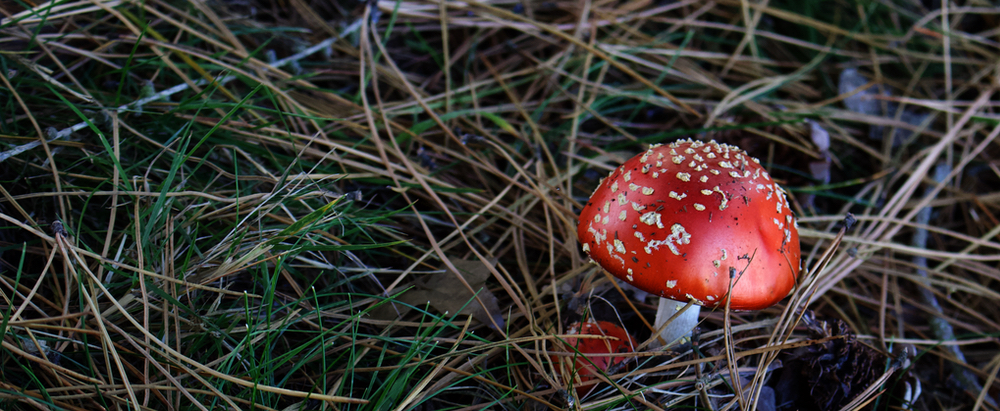
Spring Seed Sowing Week 1
Hello friends,
We're now into the last month of winter, and it's finally time to start sowing seed for spring. It's a tricky time of the year, as it's possible to get snow here in Dunedin even into the first week of October, so there's nothing worse than sowing seeds too early, and then having to try and keep them alive if there's a late frost or snow in early October. Last year we had snow laying on the ground the first week of October, and a couple of frosts the weeks after that, so it was a stressful time trying to keep all my seedlings alive, looking after my growing potato plants, as well as my new dahlias which had just popped out of the ground. Seedlings don't get transferred outside and into the vegetable garden until Labour Weekend, which is the third weekend of October, so that's a long way off right now.
I have a specific order in which to germinate seeds, so that I don't have too many plants sitting in the glasshouse for such a long period of time. The first seeds sown are my tomato plants. I grow enough plants for our own needs, but also for family members as well. I usually have at least 12 plants growing in our glasshouse, and poke any others that are spare in free space I have in the vegetable garden. We eat a lot of tomatoes fresh throughout the summer, but the bulk of it is frozen away for using in autumn and winter cooking.
This year I'm growing the following tomato varieties:
Franchi Sementi Pomodoro Red Cherry - A red cocktail tomato with great taste. This is no longer for sale in New Zealand, I save this seed every year.
Kings Honeybee F1 - I haven't tried this one before, I wanted to try another cocktail tomato, we'll see how this goes. One of my sister's grows her tomatoes outside, and it's far easier to ripen smaller tomatoes in Dunedin's short summers.
Kings Tomato Juane Flamme - Our favorite tomato, an orange tomato with the best taste of any tomato I've ever grown.
Tomato Grosse Lisse - A beefsteak tomato that was a favorite of my grandfather. The best tomato for putting a slice on a hot piece of toast, and eating it with a pinch of salt on top.
Tomato Island Bay Italian - I haven't grown this tomato variety before, but I've heard good things about it. Good for eating fresh and processing apparently.
Tomato Lebanese - Also a new tomato variety this year, I'm hoping it will have good disease resistance, and tastes good too.
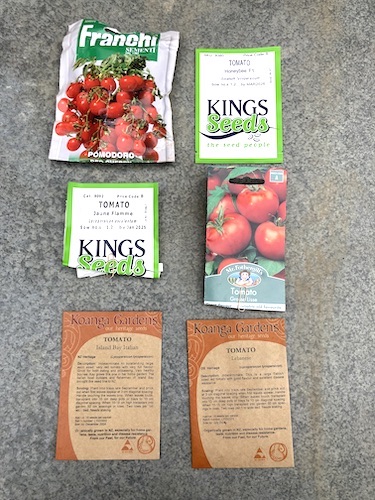
The next seeds to be germinated are my chilli and capsicums plants. I've successfully grown chillies in our greenhouse, but I haven't had any luck with the big traditional bell pepper capsicums.
This year I'll be growing the following chillies and peppers:
Chilli Serrano - I had a huge crop of chilli last season, so I'm growing this variety again.
Alma Paprika Pepper - Trying once again to grow my own paprika. Last season they didn't grow as well as I hoped, am trying again for the last time.
Capsicum Marconi Red - A prolific sweet Italian variety. I'm hoping that it's narrow shape will mean it ripens faster.
Capsicum Orange Sun - My last attempt at growing a bell pepper variety.
Capsicum Red Bell F1 - Also another last attempt at successfully growing a bell pepper variety.
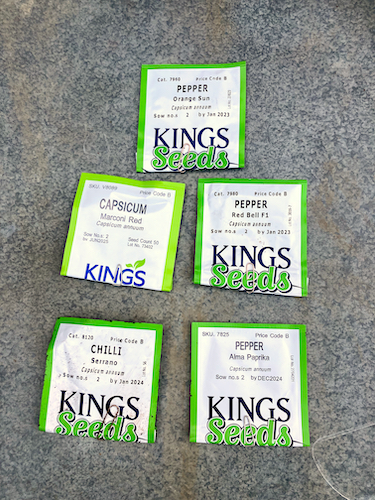
The tomato and chilli seeds were sown into two mini greenhouses, and placed in a warm sunny spot in our dining room. It's warm in there on sunny days, and also thanks to the benefit of our wood burner being in that room, they're kept warm in there every night in winter. I'm eagerly waiting for the seeds to germinate.
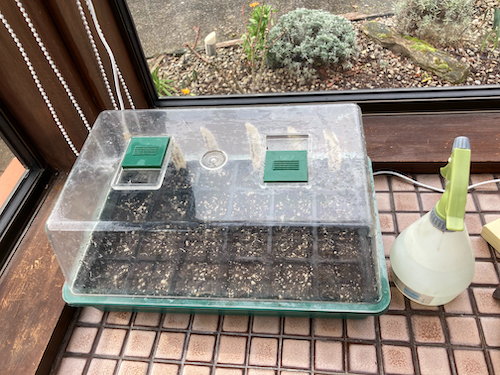
The next seeds to be sown are all my sweet pea varieties. I've collected quite a lot of Keith Hammett varieties over the years, he's a New Zealand breeder who produces the most stunning sweet peas. Sweet peas germinate in cool temperatures, so they are now potted up and put into the glasshouse.
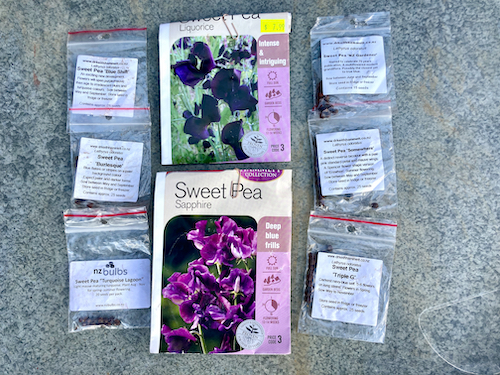
The last of the seeds to be sown for now are the herbs coriander and dill. Coriander prefers to grow in cool temperatures, otherwise they will bolt, so I sow one lot in late winter, and another in early autumn. They don't like to have their roots disturbed while planting into the ground, so I sow a bunch of seeds into a biggish pot, and then when it's time to transfer them into the herb garden, I plant the whole container worth in one spot, I don't separate out the seedlings at all. For the dill seeds I do the same thing as with the coriander, it ensures I get a relatively big crop of leaves without the problem of using up a lot space.
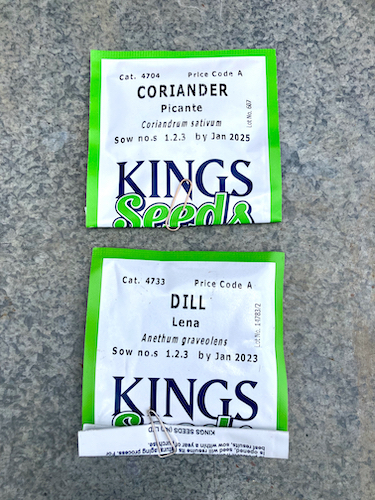
The sweet peas, coriander, and dill are all now sitting in my glasshouse. We're were expecting snow down to 200 m last night, so I've put off doing any more seed sowing tomorrow. Hopefully soon they will be joined by a lot more seeds as the month goes on.
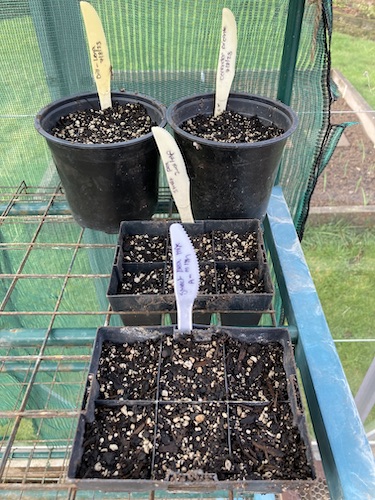
Have you started seed sowing yet? I'm interested in what choices you've made for the coming growing season.
Have a wonderful day
Julie-Ann
Want to discuss my post? Feel free to chat with me on Instagram or Mastodon.
Gardening - My Anemone and Collarette Dahlias
Hello friends,
Today I thought I'd share with you all the anemone and collarette dahlias dotted around my garden. Now that we're in autumn it's only a matter of time before the first frost of the season hits them, and the flowers and plants die down for the winter season.
My
first introduction to dahlias was by my Aunt, who was a big dahlia
collector when I was growing up. I remember many happy weekend
afternoons following both, her and my grandfather around their back
garden as they worked, and admiring my aunt's many dahlias. I thought
they were big and beautiful, and wished for some of my own one day.
I
started collecting dahlias myself when we were living in Wellington. I
came upon a bedraggled dahlia tuber sitting in a bag at a garden store,
and took it home in order to rescue it, and gave it a new home. That
dahlia was Dahlia Lucky Number.
Dahlia
Lucky Number is a big dahlia, measuring over 1.5 m tall and is a
prolific flowerer, with hot pink flowers the size of a dinner plate.
Because it is a collarette dahlia, with the heart of the flower exposed,
it is very popular with both bees and butterflies. In truth, it is one
of my favorite dahlias.
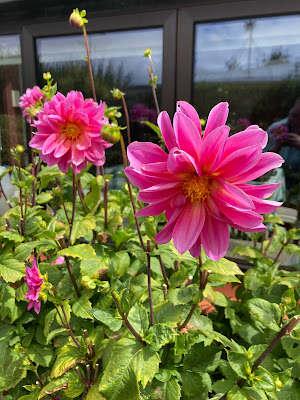
It
wasn't long before I picked up another dahlia, this time the Keith
Hammett bred (he's a New Zealand breeder) Dahlia Mystic Sparkler. Mystic
Sparkler is another collarette dahlia, and has beautiful dark foliage
which shows off the hot pink and yellow flowers. This dahlia is also
attractive to birds and bees as well. This dahlia is compact, and grows
well in pots and planters.
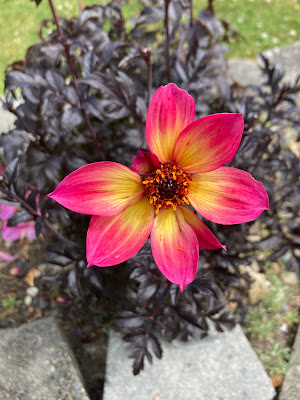
When we moved back to Dunedin in October 2019, my dahlias had already arrived ahead of me. The winter of 2019, I had dug up all my dahlias, trimmed them, and couriered them down to my sister in Dunedin, where she put them into her garden for the upcoming summer season. Once we had found a home down there, and after the summer season (and the first Covid 19 lock down), we dug all my dahlia tubers up, and I took them home to plant in the ground.
But
meanwhile, in October 2019 after we had moved into our home, I couldn't
resist picking up another Keith Hammett dahlia from the garden store,
and planting it in my front garden. Dahlia Mystic Enchantment is a
dahlia related to Mystic Sparkler. Mystic Enchantment has the same
characteristics of Dahlia Mystic Sparkler, except it has florescent
orange flowers, and is an anemone dahlia. Bees are also attracted to its
flowers, and the plant is a very prolific flowerer.
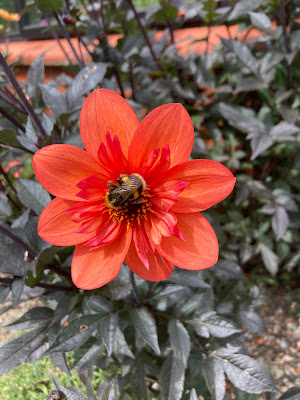
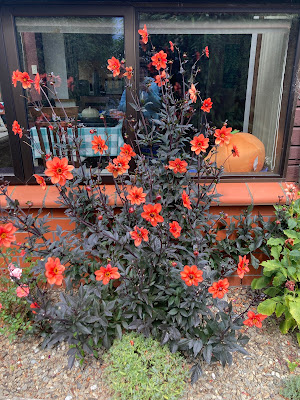
More recently I've picked up another Keith Hammett Dahlia, this time the collarette dahlia, Protegee. It has the same dark foliage as Mystic Sparkler and Mystic Enchantment, but it's flowers are bright pink in the middle, surrounded by a lighter pink.
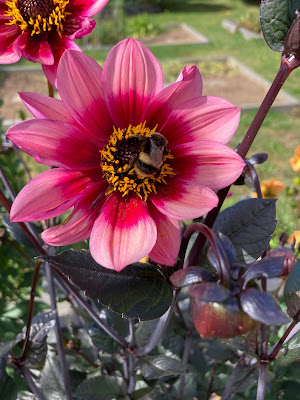
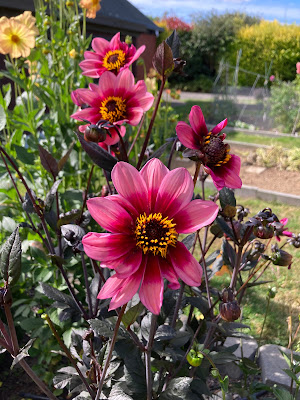
And another Keith Hammett Collarette dahlia I've also acquired recently is Dahlia Home Run. It has pretty, bright pink flowers, and adds nicely to my ever growing collection of Keith Hammett dahlias.
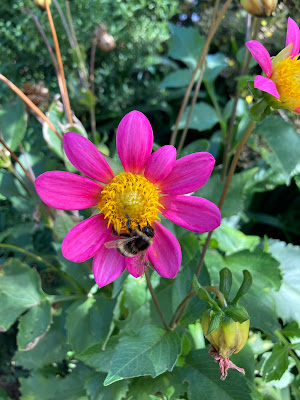
And as if I couldn't get enough of Keith Hammett's dahlias, he has a website where you can buy seed packets containing dahlias seeds from his breeding experiments. Each seed will give rise to a dahlia that has never been seen before. You will never know what you will get. I've bought seeds from his Beeline, Beeline II, and Sunflower collections, and sprinkled them around my garden. The photos below show the variation I've gotten so far from my seed sowing.
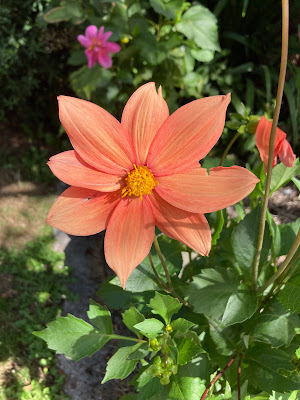
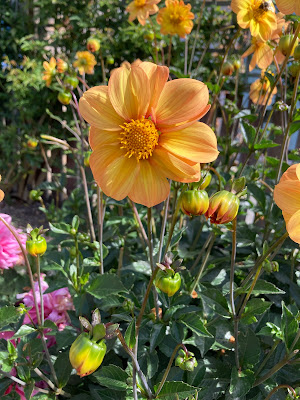
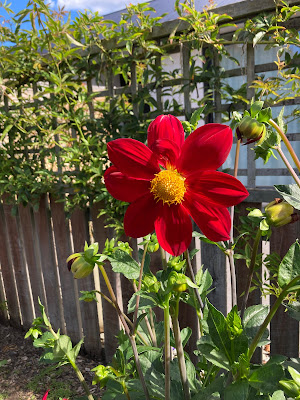
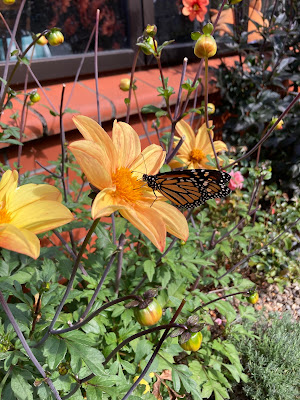
I have many more Keith Hammett dahlia seeds stored away, so who knows what colours I will get in the years to come as I sow more seed. But these aren't my only dahlias, I also have a number of stunning dinner plate and decorative dahlias also, and I will show you those as well in the coming weeks.
If
you are new to dahlias, and are unsure how to look after some of you
own, I really recommend the book, Discovering Dahlias, by Erin
Benzakein. It contains detailed information on looking after dahlias,
and has many great photographic examples on how to do things like
dividing dahlias etc.
Autumn,
is certainly settling in down here in the deep south, the nights are
getting longer and cooler, and trees are starting to change colour. As I
am having sinus surgery late next week, the next week in the garden
will be very busy for me, getting jobs done before I will be recovering
for the next three weeks after that. I have spring bulb orders arriving
soon, and I would like to get them in the ground as soon as possible,
otherwise hubby will have to do them for me, which should be fun...
Have a wonderful day,
Julie-Ann
Want to discuss my post? Feel free to chat with me on Instagram
or Mastodon.




